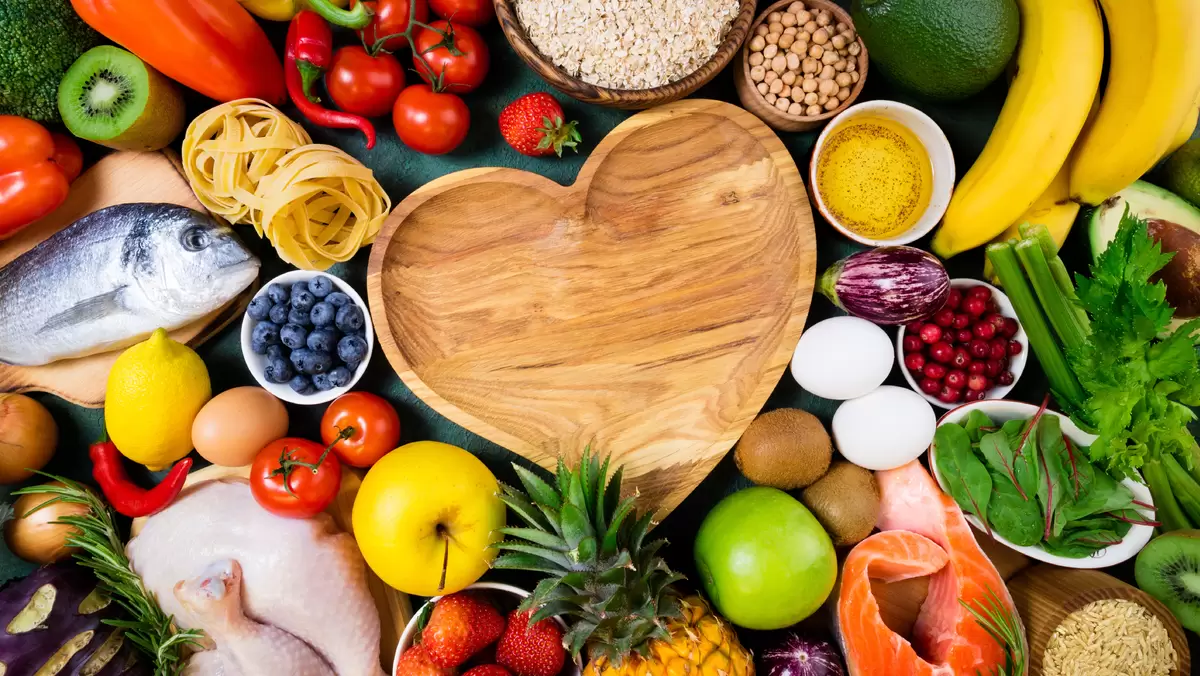Join Our Newsletter
Get our best recipes and health tips delivered right to your inbox!

It may come as no surprise that the foods you eat can impact your risk of heart disease, high blood pressure, heart attack, and stroke. Adopting a heart healthy diet may help keep your heart healthier, but doing so doesn’t mean you need to follow strict rules or give up your favorite foods. All you need to do is follow a few heart healthy guidelines and make smart choices so you can enjoy the foods you love while being good to your heart.
At Health eCooks, we’re proud to share heart healthy recipes with you that taste delicious while also being nutritious. Almost every recipe on our site meets our heart healthy dietary guidelines, so you can feel good knowing that you’re being good to your heart while enjoying our delicious meals, snacks, and desserts. Our team of dietitians has also compiled this comprehensive resource of heart healthy guidelines and tips to help you eat for a healthier heart.
Focusing on eating more nutrient-dense foods and limiting unhealthy ingredients helps reduce your risk of heart disease, lower blood pressure and cholesterol levels, and improve your overall well-being. The key is to know which heart healthy foods are best to include in your diet and which foods should be limited or avoided. It’s also helpful to understand how to make minor changes and substitutions when cooking to keep meals as heart friendly as possible. We share all of this information (and more!) right here to make it easier to eat for a healthier heart.
There’s no single way of eating that is considered a “heart healthy diet”, but it is an eating style designed to reduce your risk of cardiovascular disease and high blood pressure while supporting healthy heart function. The main elements of heart smart diets focus on consuming an assortment of whole, nutrient-dense foods, such as fruits, vegetables, whole grains, lean proteins, and healthy fats. The amount of sodium, saturated and trans fats, and added sugars eaten are limited.
Here are some key features of a heart healthy diet:
At Health eCooks, our recipes focus on creating delicious food you want to eat while helping you meet these recommended dietary guidelines from the American Heart Association®:
Our team of registered dietitians works in conjunction with our recipe developers and professional chefs to create heart healthy recipes that maximize taste while fitting into a heart healthy lifestyle. Many factors go into determining if a recipe is heart healthy and these nutrition guidelines from the American Heart Association’s Heart-Check program are taken into consideration during the process:
Entrees
One Dish Meals
Appetizers and Side Dishes
Desserts
Here are a few suggestions to help you meet recommended eating guidelines for a healthier heart:
Making heart healthy choices doesn’t have to be overwhelming. Here are some simple ways to slowly adapt your eating style to improve your heart health:
Making the right food choices is key to a heart healthy lifestyle. These heart healthy foods are packed with essential nutrients to keep your heart strong, but they are just a sampling of the delicious and nutritious whole foods you can eat on a heart healthy diet:
Looking for delicious recipes to cook that support your heart health? Check out these dietitian-approved recipes:
Following a heart healthy diet has many benefits beyond just reducing your risk of heart disease. A balanced diet that follows heart healthy guidelines helps:
By choosing whole, nutrient-dense foods and making simple swaps in how you cook and plan meals, you can improve your heart health and overall well-being.